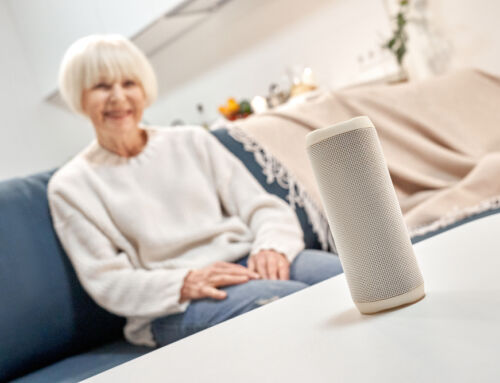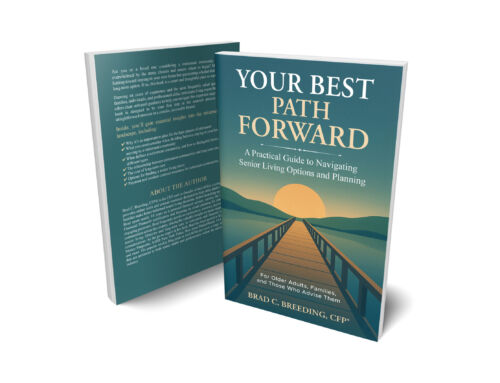“Healthy aging” is a hot topic these days. It is driven in part by the baby boomers — people who often pride themselves on being active and forever young — continuing to reach retirement age. A 2023 study published by the McKinsey Health Institute (MHI) explored how older adults view this concept of “healthy aging” and what their healthy aging priorities are. The researchers’ findings were revealing.
Studying the healthy aging concept
The MHI 2023 Global Healthy Aging Survey surveyed more than 21,000 people aged 55 and older across 21 countries (about 1,000 people per country) to learn more about the respondents’ health perceptions, preferences, and activities. To get a representative sample of each country’s population, the researchers used quotas and respondent weights for criteria like age, gender, urban/rural location, tertiary education, and self-reported health status.
The MHI survey looked at 53 factors to identify what is most important to older adults and how these factors influence their health. To this end, the issues that rated as being of above average importance were:
- Having purpose in life
- Balancing stress levels
- Being conscious of physical posture/movement
- Participating in formal learning/continuing education
- Having opportunities to learn new skills
- Volunteering when able
- Having meaningful connections with friends
- Having a mentally stimulating lifestyle
- Engaging in regular moderate to vigorous exercise
- Getting a good night’s sleep
- Feeling confident and informed in making financial decisions
- Feeling that their perspective as an older adult is valued
- Feeling like a respected part of the community
In short, analysis of these survey results shows that purpose, stress, physical activity, lifelong learning, meaningful relationships, and financial security are among the essential elements tied to respondents’ overall perceptions of healthy aging.
Interestingly, there were some nuances in survey responses by country. For example, respondents from high-income economies (HIEs) and upper middle-income economies (UMIEs) put more emphasis on stress and financial choices. People from lower middle-income economies (LMIEs), on the other hand, focused more on exercise and sleep as important to health.
>> Related: Could the Secret to Healthy Aging Actually Be Reverse Aging?
The need for meaningful social engagement
Digging deeper into survey participants’ social activities, spanning different countries and income levels, “employment” emerged as the most commonly reported form of societal participation. This was followed by “formal volunteering” among respondents in lower middle-income economies and “community programs” among those in high-income economies and upper middle-income economies. However, across economic income levels, “community programs” were the most-desired social engagement activity, signifying a large unmet need among older adults.
Across economic income levels, “education” emerged with the lowest participation. This is perhaps not too surprising given the age demographic of the survey respondents. However, it was the second most commonly desired form of social participation, potentially revealing an unmet demand.
Also notable — and somewhat concerning — only 41% of respondents in HIEs said that they participate in any form of societal engagement or activity. Compare that to lower middle-income economies where just 15% said they don’t participate in any activities. While the reasons for this may differ from person to person and country to country, the research highlights a significant opportunity to boost societal participation, particularly since up to 44% of older adults expressed a desire to try a new activity.
>> Related: Rediscovering Your Life’s Purpose Later in Retirement
Social engagement is key to healthy aging
The MHI survey also revealed that societal participation yields significant benefits to perceived health. Those who engage in work, volunteering, education, and community activities reported better overall health compared to those who do not take part in these activities. Among these four categories, volunteering showed the greatest correlation to healthy aging, with an average increase of eight percentage points in health perception.
It is worth noting that participating in certain activities can be challenging for those with declining health or mobility, but it doesn’t completely prevent it. In fact, the survey data reveals strong interest in societal engagement even among those in poor health.
More than 1 in 5 respondents who self-described as being in poor health still reported working. Employment rates for those in average health were higher, with nearly a third (32%) still in the workforce, as well as 44% of those who reported being in good health.
Although there may be a greater economic impact to society with older adults’ employment, this study suggests that older adults who volunteer, engage in community activities, or pursue education are more likely to report better health. The added advantage of better health is potentially lowering healthcare costs.
But there is another crucial healthy aging benefit that is tied to societal participation. The survey found that across economic levels, those who reported participating in more activities also reported less isolation. Participating in even one of the four activity categories — work, volunteering, education, or community activities — yielded lower self-reported isolation numbers.
Since research continues to show that loneliness and isolation are closely related to a decline in mental and physical health, this particular finding underscores the importance of facilitating older adults’ ability to take part in societal activities in order to promote healthy aging.
>> Related: How Today’s 55 Community Prospects Are “Aging Unbound”
How the senior living industry can facilitate healthy aging
The findings of the MHI 2023 Global Healthy Aging Survey are eye-opening about the state of older adults’ health and how societal participation can positively correlate to healthy aging. Furthermore, this research highlights areas where retirement communities can help their residents access more of the activities that older adults associate with better health.
Indeed, this study should serve as a blueprint for what the senior living industry should be focusing on in the coming years as the baby boomers enter the marketplace. For example:
Education
The survey respondents noted that education and life-long learning are among their desired goals. Many retirement communities offer educational speakers and events on-site. Some even have cooperative programs with nearby colleges or universities where residents can take courses.
The senior living industry must continue to look for innovative ways to give residents access to the types of educational programming that they desire. These preferences will likely evolve with the baby boomers, so the key is making such programming both appealing and accessible.
Community activities
Staying socially active is essential to staving off isolation, though this can become challenging should health or mobility issues arise with age. Retirement communities often excel in facilitating low-mobility-friendly access to social engagement opportunities with other residents.
The senior living industry should also pursue creative new ways for residents to connect with others. This might include opening up their doors to the broader community for intergenerational programs or other on-campus activities and events. It should also include coordinating access to off-campus experiences that residents would like to take part in.
Volunteering
MHI found that volunteering was seen by respondents as the most beneficial activity that older adults can take part in to achieve healthy aging benefits — increasing the perception of health by an average of eight percentage points. Similar health benefits of volunteerism have been shown by numerous other studies as well. This is closely tied to the top of the list of factors that survey respondents said influence their health: having purpose in life.
Many retirement communities provide residents with opportunities to volunteer with meaningful organizations either on campus or off. The senior living industry should continue to put an emphasis on offering residents a variety of ways to pursue volunteerism, being sure to allow for options that work for those who have health or mobility issues.
>> Related: A Positive Aging Mindset May Slow or Even Reverse the Aging Process
Improving on a good thing
It’s important to note that many senior living providers already do a fantastic job with offering residents access to social activities. They deserve kudos for the great work they are doing to improve their residents’ quality of life and overall wellbeing.
For retirement communities that have room for improvement, this MHI study highlights the areas that should be your focus in order to provide your residents more healthy aging opportunities.
And for the senior living industry as a whole, this study can offer a roadmap for the future, underscoring what can continue to be done to bolster healthy aging among older adults. It is important work!

FREE Detailed Profile Reports on CCRCs/Life Plan Communities
Search Communities






